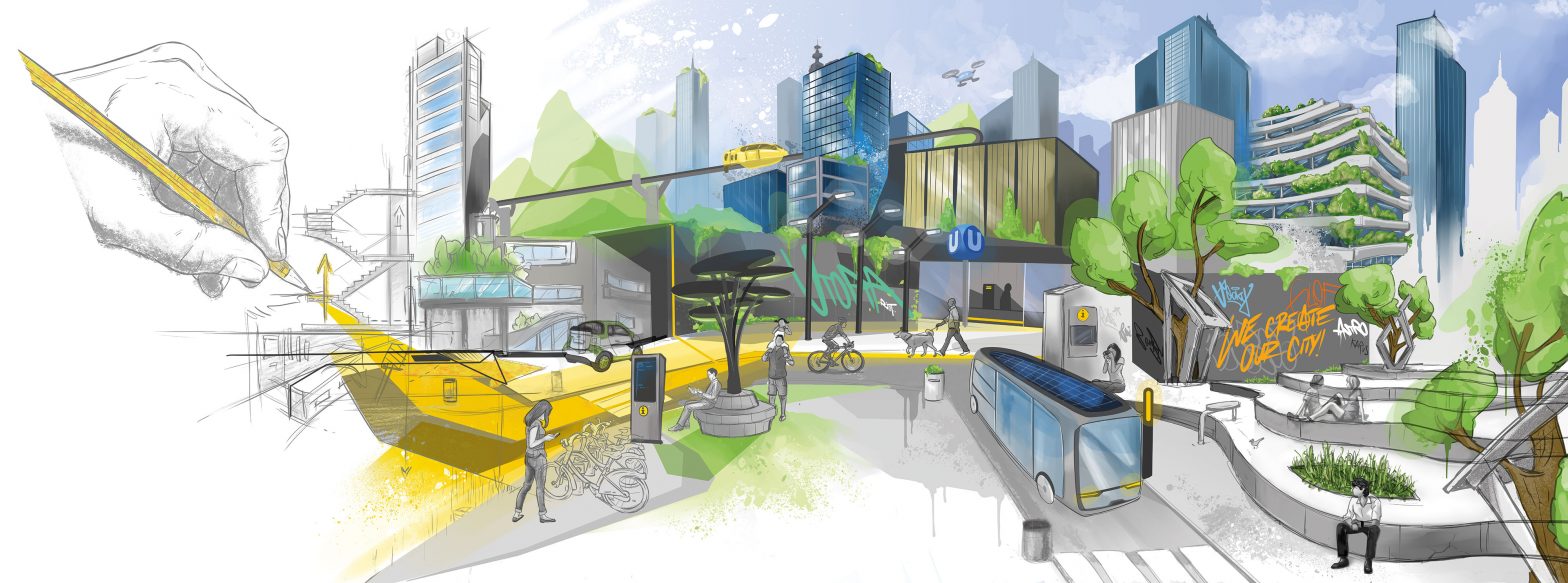
Photo: Kapsch TrafficCom
Revolutionising traffic management: cost-effective solutions with connected vehicle technology
12 September 2024
By: Tim Wray, Sales Director UK & Ireland, Kapsch TrafficCom
As global traffic density increases, highway operators and urban traffic managers are confronted with the task of managing congestion, ensuring safety, and maintaining the flow of traffic with limited resources. Connected vehicle technology offers a transformative solution that addresses these challenges by providing more data, insights, and also more direct ways of interacting with the drivers on the road.
The power of connected vehicle technology
Connected vehicle technology involves equipping vehicles with communication capabilities that allow them to interact with each other and with traffic management infrastructure. This V2X (vehicle-to-everything) technology enables the exchange of critical data, such as vehicle speed, location, and traffic conditions, which can be used by traffic managers to optimise traffic flow and respond quickly to incidents. By deploying connected vehicle technology, traffic managers can move from reactive to proactive management, drastically reducing the need for physical infrastructure like variable message signs and surveillance cameras.
Kapsch TrafficCom is committed to driving innovation and efficiency in traffic management by integrating connected vehicle technologies, as exemplified by our involvement in the Irish National Intelligent Mobility System (NIMS) project. This initiative showcases how our solutions reduce operational costs and increase the effectiveness of traffic management infrastructure.
The Irish NIMS project: A model for success

Through the realisation of NIMS, the Transport Infrastructure Ireland (TII), is seeking to more effectively manage traffic flow and optimise the performance of the motorway network in Ireland, capture and disseminate traffic and network performance information, and coordinate incidents response capabilities.
TII has launched a pilot programme to test new connected vehicle technology to improve road safety. The system will send real-time alerts to drivers on the M50 and M1 motorways, warning them of road hazards, congestion, bad weather and even electric vehicle charging points in their vicinity. The M50 highway is a radial route around Dublin and the busiest highway in Ireland. The M1 highway connects Ireland’s two largest cities, the capital Dublin and Belfast, and is the longest highway in Northern Ireland. Both have a huge impact on traffic in Dublin.
NIMS demonstrates that connected vehicle technology can significantly enhance traffic management capabilities while reducing costs. By integrating V2X solutions, the project has minimised the reliance on physical infrastructure, leading to substantial cost savings in installation and maintenance. Additionally, the real-time data provided by connected vehicles has enabled traffic managers to respond more quickly and effectively to changing traffic conditions, improving safety and reducing congestion.
The project serves as a leading example of the successful implementation of connected vehicle technology. In collaboration with TII, Kapsch TrafficCom has played a pivotal role in this project, providing the necessary connected vehicle technology and expertise to modernise traffic management on some of Ireland’s most important roads.
Cost benefits through infrastructure reduction
Traditional traffic management relies heavily on fixed infrastructure, which requires significant investment for installation and maintenance. This includes costs associated with the deployment of hardware, software updates, and regular maintenance to keep systems operational. Connected vehicle technology offers a number of advantages over traditional approaches:
Cost Savings: By reducing the need for physical infrastructure, roadway operators can save on the costs associated with purchasing, installing, and maintaining signs and cameras. These savings can be substantial, especially in large urban areas with extensive road networks.
Lower Maintenance Costs: Traditional traffic management systems require regular maintenance to ensure they function correctly. Connected vehicle technology minimises the need for this maintenance, leading to further cost savings and reducing the risk of system malfunctions.
Enhanced Operational Stability: With fewer physical components to maintain, the overall stability and reliability of the traffic management system are improved. This means fewer breakdowns and less downtime, ensuring that traffic managers can respond effectively to changing traffic conditions.
Scalability: Connected vehicle technology allows for easier scalability. As traffic volumes and patterns change, the system can adapt without the need for significant infrastructure changes or investments.
Near-Real Time Response Capabilities: One of the standout features of connected vehicle technology is its ability to provide near-real-time data to traffic managers. This capability is crucial for effective traffic management, allowing for quick responses to accidents, traffic congestion, and other incidents. The Irish NIMS project demonstrated that connected vehicle technology could provide traffic managers with the information they need to make informed decisions quickly and efficiently.
A future of efficient and sustainable traffic management
The introduction of connected vehicle technology presents a transformative opportunity for roadway operators and urban traffic managers. By reducing the need for traditional infrastructure and providing near-real-time data, this technology offers a cost-effective and efficient solution for managing traffic on highways and in urban areas, while not sacrificing any of the insights that traditional systems provide. The Irish NIMS project serves as a compelling example to global cities of how connected vehicle technology can lead to substantial cost savings and improved traffic management.











